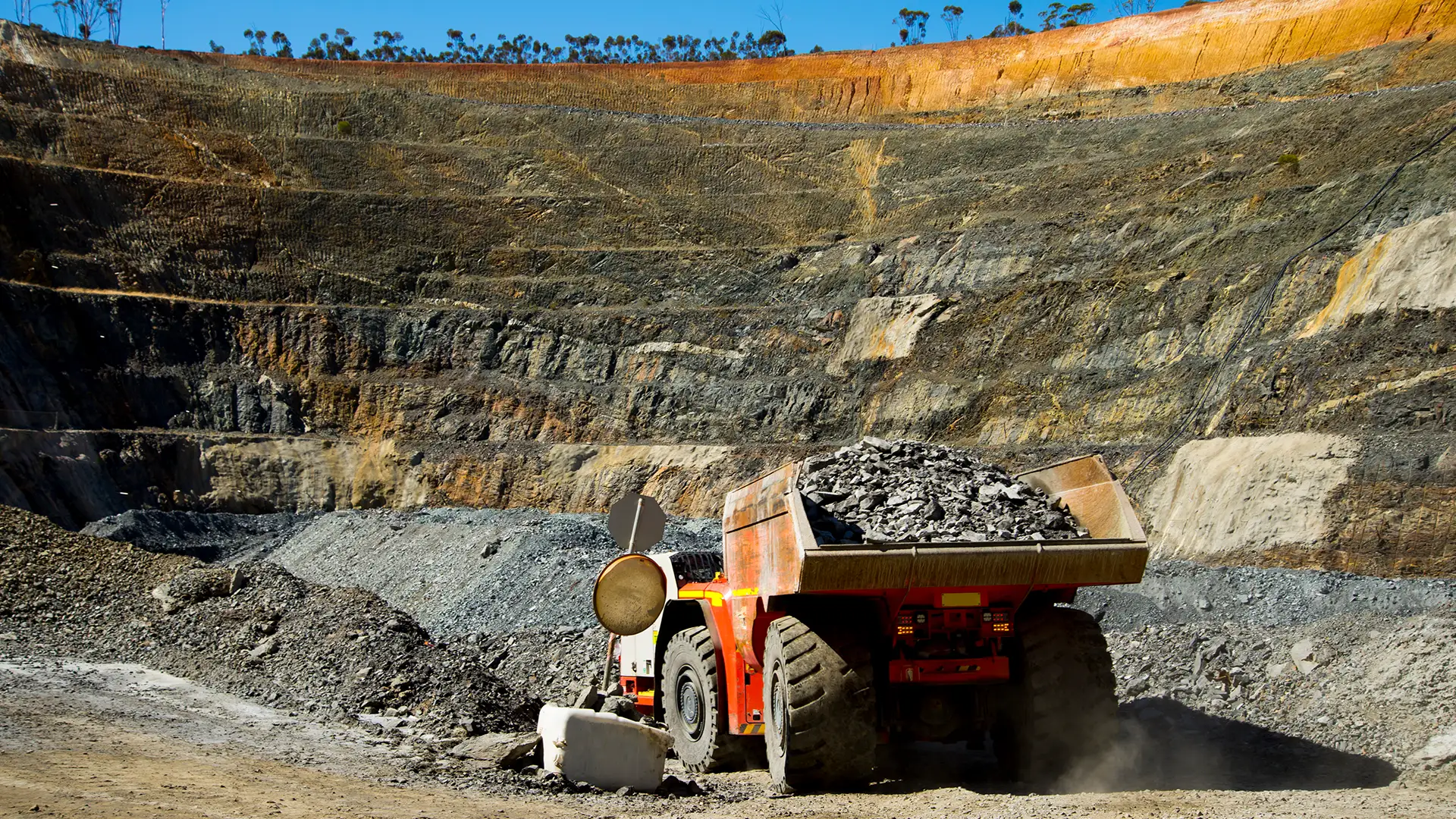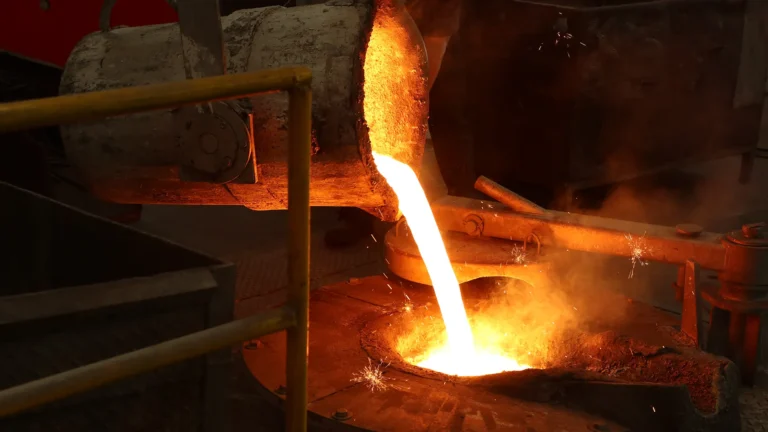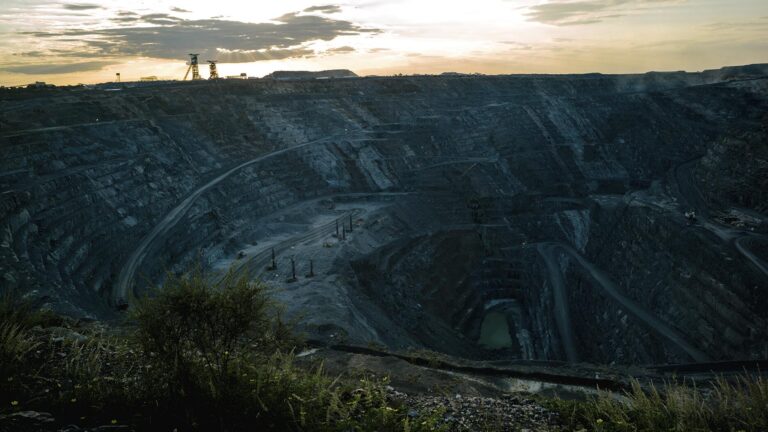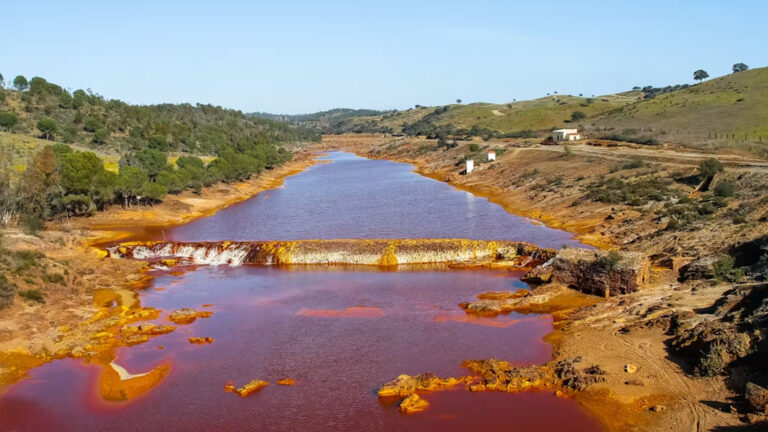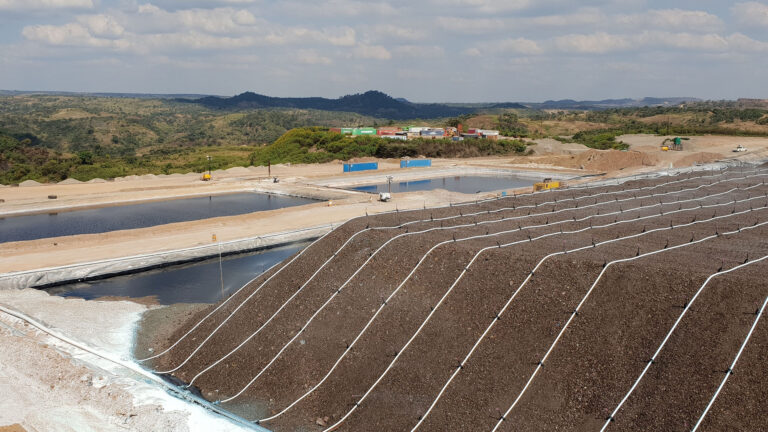Gangue refers to the commercially worthless material that surrounds, or is closely mixed with, the valuable minerals in an ore deposit.
The valueless minerals or rocks found with valuable ore minerals are called gangue. There is a distinct difference between gangue and the valuable minerals in ores, as gangue must be separated to obtain the desired metal.
Gangue often contains impurities that need to be removed during processing. It is essentially the “waste” rock that must be separated from the ore during the beneficiation process. Examples of gangue include quartz, calcite, and feldspar that often accompany valuable minerals like gold, copper, or iron.
Why does gangue matter?
Understanding gangue is critical because it directly affects the efficiency and cost of mining operations. Ores are mined and extracted together with gangue, and the valuable minerals must be separated from the gangue during processing.
The higher the proportion of gangue, the more energy, water, and chemicals are required to process ore and extract the valuable metals. Managing gangue effectively improves profitability, reduces waste, and minimizes environmental impact.
Introduction to Gangue
Gangue is the commercially worthless material that is found surrounding or closely mixed with valuable minerals in an ore deposit. Unlike overburden, which refers to the waste rock or materials overlying a mineral body and removed during mining without further processing, gangue is intimately associated with the ore and must be separated during mineral processing.
This separation process, known as ore dressing or mineral dressing, is a fundamental step in mining, as it determines the concentration of valuable minerals within the gangue material.
The efficiency of this process can significantly impact the commercial viability of mining a particular deposit.
The periodic table lists 118 elements, and remarkably, 95 of these are metals that can be extracted from ores through various processing methods, including smelting and calcination.
The presence of gangue in an ore deposit means that not all material mined is valuable; only the minerals containing the desired elements are targeted for extraction.
The rest, called gangue, must be efficiently separated to maximize the yield of valuable metals and minimize waste. Understanding the distinction between gangue and other materials overlying the mineral body is essential for effective mining and processing strategies.
The History of Gangue in Ore Deposit
The term “gangue” has been used since the 19th century, when industrial mining expanded. Early miners often discarded gangue in piles near mines, leading to environmental issues like acid mine drainage.
Over time, gangue management has become more sophisticated, with modern mines employing advanced separation techniques and reprocessing waste to extract secondary value.
Large quantities of gangue are produced by mining operations both historically and today, making effective waste management essential for reducing environmental impact.
Terms to Know
- Ore: Rock that contains economically valuable minerals.
- Metal: A naturally occurring element, often found in ores, that can be extracted and used for various industrial purposes due to its physical and chemical properties.
- Hydrogen: One of the most abundant elements in the Earth’s crust, hydrogen is notable for its natural occurrence and its relevance in the periodic table.
- Sodium: A naturally occurring, abundant element in the Earth’s crust, sodium is found in both combined and pure states.
- Metallurgy: The scientific and technological process of extracting and refining metals from their ores, including steps like concentration, purification, and transformation into usable forms.
- Purification: A key step in metallurgy where concentrated ore is processed to remove impurities, resulting in pure metal suitable for industrial applications.
- Slag: An infusible mass formed during the purification of metals, consisting of impurities and flux, which separates from the molten metal.
- Tailings: The fine waste material left after mineral processing.
- Beneficiation: The process of separating valuable ore minerals from gangue.
- Acid Mine Drainage (AMD): Acidic water formed when gangue minerals like pyrite oxidize.
Composition and Properties of Gangue
Gangue is the portion of an ore deposit that consists of minerals and materials with little or no economic value, often found closely mixed with the valuable minerals targeted for extraction.
The composition of gangue varies from one deposit to another. Still, it commonly includes minerals such as silica (in the form of quartz), silicates, carbonates, and other compounds that are not useful in the recovery of metals.
These minerals form the matrix or background in which valuable metals like gold, copper, or iron are embedded.
The properties of gangue, such as hardness, melting point, and chemical reactivity, play a significant role in how easily valuable minerals can be separated during ore dressing. For example, gangue minerals like silicates can be tough and resistant to crushing, making the initial processing of the ore more energy-intensive.
In some cases, the gangue may react with chemicals used in extraction, complicating the separation process.
During mineral processing, or ore dressing, the goal is to separate and concentrate the valuable minerals from the gangue.
This is achieved through a series of steps, including crushing and grinding the ore to liberate the minerals, followed by techniques like flotation or gravity separation to remove the gangue. The efficiency of these processes depends heavily on the nature and concentration of gangue present in the deposit.
A high concentration of gangue in an ore deposit can significantly impact the economics of mining. More gangue means more material must be processed and disposed of, increasing costs and reducing the overall yield of valuable metals.
As a result, understanding the composition and properties of gangue is essential for designing effective extraction and processing strategies and for determining whether a mineral deposit is commercially viable to mine.
Extraction and Processing of Gangue
The extraction and processing of gangue are central to the mining industry, as they determine how efficiently valuable minerals can be recovered from ore.
The process begins with mining, where both ore and gangue are removed from the earth. Once mined, the ore is crushed to break it down and liberate the valuable minerals from the surrounding gangue.
This is followed by ore dressing, a series of separation techniques designed to concentrate the valuable minerals and remove as much gangue as possible.
During ore dressing, various methods such as flotation, gravity separation, and magnetic separation are used to separate valuable minerals from gangue. In metallurgy, the use of fluxes is crucial for further purification.
For example, in the extraction of copper, a basic flux like limestone is added during smelting to bind with impurities and form a slag, which can be easily separated from the molten copper. Similarly, acidic fluxes such as silica are used in the extraction of other metals like iron and tin, helping to remove unwanted compounds and produce a purer metal.
The choice of flux and separation method depends on the specific minerals and impurities present in the ore, making the processing of gangue a complex but essential part of metal extraction.
The Pros and Cons of Gangue
Pros:
- Some gangue minerals, particularly coal gangue, can be reused in construction. They can be processed and used to make various building materials like bricks, cement, and lightweight aggregates
- Provides geological clues about ore formation.
Cons:
- Increases processing costs.
- Creates large volumes of waste material, as the mass of gangue often greatly exceeds the mass of valuable ore.
- The relative proportion of gangue to ore in mining waste is significant, impacting both the efficiency of mineral recovery and the scale of environmental management required.
- It may lead to environmental hazards if improperly managed.
Global mining activities produce over 100 billion tonnes of solid waste annually, much of it gangue and tailings. The mass of gangue generated is substantial, and its relative amount compared to valuable minerals highlights the challenge of managing mining waste.
Examples of Gangue
- Quartz in gold mining operations.
- Calcite in lead-zinc ore deposits.
- Pyrite and sulfides in coal and metal mining can generate acid mine drainage.
- Clay minerals in bauxite mining.
- Oxides such as hematite and magnetite are common gangue or ore minerals in various metal extraction processes.
- Tin (cassiterite) in tin mining, where gangue is separated during mineral processing.
How Gangue and Waste Rock are Managed
Ore is first crushed to liberate valuable minerals from gangue. Techniques like flotation, gravity separation, or magnetic separation are then used to remove gangue. Ores are treated through various processes to extract metals.
Depositing gangue in tailings dams or waste dumps.
Extracting residual metals from old gangue piles often involves heating, such as in calcination, to facilitate metal recovery. Processes like calcination and smelting usually require heating in a limited supply of air to convert ores into oxides or extract metals.
Smelting is a key process for separating metals from gangue, where flux is added during smelting to help form slag and separate impurities.
Tips and Reminders for Gangue Management
- Monitor gangue composition to predict environmental risks.
- Implement recycling strategies to reduce waste.
- Design tailings storage with long-term stability in mind.
Supporting Cluster Post to Include: [Sustainable Mining Practices]
Analyzing Gangue and Valuable Minerals
Analyzing gangue involves mineralogical and chemical tests to:
- Determine processing methods.
- Assess potential environmental hazards.
- Explore secondary uses for the waste material.
By analyzing gangue, geologists can distinguish the mineral body—the valuable mineral component of the ore deposit—from the surrounding waste material, which is crucial for assessing the deposit’s economic viability and planning extraction.
For instance, re-mining of historic gangue piles has recovered significant quantities of rare earth elements in some regions.
Economic Considerations of Gangue
The economic impact of gangue is a significant factor in the mining industry. For a mining operation to be profitable, the value of the valuable minerals extracted from the ore must exceed the costs associated with removing and processing both the ore and its gangue.
The concentration of valuable minerals within the gangue material is a key determinant of whether an ore deposit is worth mining. Higher concentrations mean less gangue to process and dispose of, leading to lower costs and higher profitability.
Advanced ore dressing and mineral processing technologies have been developed to improve the efficiency and cost-effectiveness of separating valuable minerals from gangue. These innovations can make previously uneconomical deposits viable by increasing the yield of valuable metals and reducing waste.
Additionally, recycling gangue can offer economic benefits. For example, gangue can be processed to recover elements like silicon and aluminum, or repurposed as a raw material in construction and other industries.
In regions where these materials are in high demand, utilizing gangue in this way can add significant value and reduce the environmental footprint of mining operations.
Resources for Gangue
- Books: Introduction to Mineral Processing by Kelly & Spottiswood.
- Reports: USGS publications on mining waste.
- Organizations: International Council on Mining and Metals (ICMM).
Future Directions in Gangue Research and Management
Looking ahead, research and management strategies for gangue are increasingly focused on enhancing both the efficiency and sustainability of extraction and processing.
Innovations in separation technologies, such as advanced flotation methods and sensor-based ore sorting, are being developed to improve the recovery of valuable minerals while minimizing waste.
There is also growing interest in finding new uses for gangue, turning what was once considered waste into a resource for construction materials, soil amendments, or even as a source of critical elements.
Environmental management is another key area of future research, with efforts aimed at reducing the ecological impact of gangue disposal and improving the long-term stability of tailings storage.
Researchers are exploring ways to neutralize harmful compounds in gangue, such as sulfides that can cause acid mine drainage, and to recover additional value from old gangue piles through reprocessing.
As the mining industry continues to evolve, the sustainable management of gangue will play a vital role in ensuring that mineral resources are extracted responsibly and efficiently.
Closing
Gangue may be considered “waste,” but it plays a crucial role in mining economics, environmental management, and sustainability. By understanding and managing gangue, mining operations can improve efficiency and reduce environmental harm.
Learn more in our Mining & Mineral Processing Glossary to understand how gangue fits into the bigger picture of ore processing.

